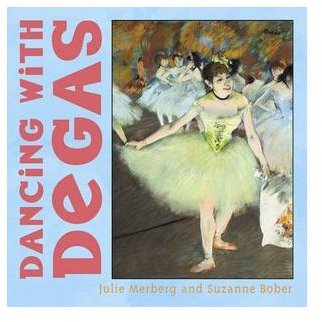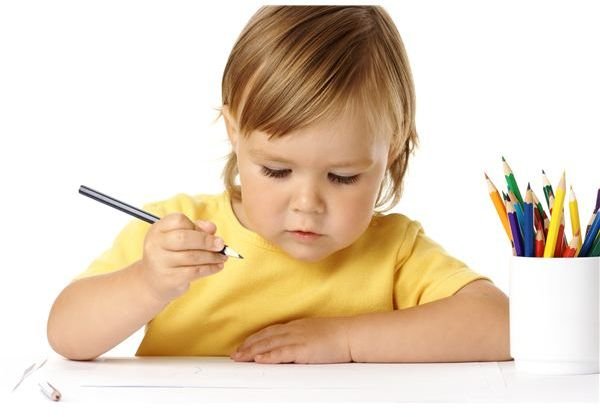Six Art Ideas for the Three Year Old Children in Your Classroom
Children’s Art as a Process
Art instruction for young children, especially three-year olds, should focus on the process, not the product. Children need to learn how to
use the different artistic media before they will be able to replicate any kinds of crafts. They need to understand how to hold the marker and paintbrush. They are developing finger muscles by working with Play-Doh and using scissors. They also have to learn about the color wheel. Below are some great art ideas for this age group.
Drawing
At this age, children are learning how to correctly hold a pencil in a tripod grasp. Further practice can also be done with markers, colored pencils and crayons. Allow for free drawing exploration using these materials.
Children at this age also are just starting to copy lines and simple shapes. Have them practice horizontal, vertical and diagonal lines. Copy shapes such as a circle, square and triangle.
Allow for large arm motion by drawing with chalk on chalkboards, or using markers at a large easel.
Painting
Teaching painting as a process can start with water. Use water on colored paper at the easel. (It magically disappears!) Gain more fine motor control by painting a rock with water.
Next move into using tempera paints at the easel. Start with one color and then gradually add more. Watercolors or tempera blocks can be used at a table for either painting the rock or on paper.
Provide a sensory experience by allowing kids to fingerpaint. As a substitute, use shaving cream or even pudding!
Using Scissors
Children can start their scissors experience by simply tearing paper. Next, they should cut strips of paper that can be cut through with one cut. No lines are on these strips, as they are simply learning how to open and close their hands. Eventually, these strips get thicker, requiring more cuts to get through.
When having children cut on lines, start with thick, straight vertical lines. Lines can get thinner as children also move into cutting on curved lines. Next come simple zig-zag lines.
Those who are really skilled in cutting will also start cutting longer wavy and zig-zag lines, as well as spirals and actual shapes.
They can start practicing gluing skills, with both glue sticks and liquid glue, using the pieces they are cutting. Eventually, put out a collage tray, filled with items for gluing.
Play-Doh
Three year olds can explore Play-Doh simply by squeezing it, rolling it and playing with it. Let them use rolling pins and cookie cutters to make shapes. The more they manipulate it, the stronger their finger muscles become. They can pinch off pieces to come up with all kinds of creations.
For a more intense muscular workout, use nontoxic modeling clay, instead.
The Color Wheel
Children often enter the preschool classroom already familiar with the names of colors. Reinforce color names with the names of the six basic colors on the color wheel and let them experiment with how to mix primary colors. They can do this with bits of Play-Doh, mixing fingerpaint or tempera paints, overlapping crayons and colored pencils. They can also use eye-droppers to mix colored water.
Art Appreciation

Simple board books designed for preschoolers can help develop art appreciation at an early age. All of the books listed below can be found at Amazon or Barnes and Noble.
- Dancing with Degas by Julie Merberg and Suzanne Bober, ISBN 978-0811840477
- Dreaming with Rousseau by Julie Merberg and Suzanne Bober, ISBN 978-0811857123
- In the Garden with Van Gogh by Julie Merberg and Suzanne Bober, ISBN 978-0811834155
- On an Island with Gauguin by Julie Merberg and Suzanne Bober, ISBN 978-0811857116
- Painting with Picasso by Julie Merberg and Suzanne Bober, ISBN 978-0811855051
- A Picnic with Monet by Julie Merberg and Suzanne Bober, ISBN 978-0811840460
- Quiet Time with Cassatt by Julie Merberg and Suzanne Bober, ISBN 978-0811855044
- Sharing with Renoir by Julie Merberg and Suzanne Bober, ISBN 978-0811847575
- Sunday with Seurat by Julie Merberg and Suzanne Bober, ISBN 978-0811847582
- Touch the Art: Brush Mona Lisa’s Hair by Julie Appel and Amy Guglielmo, ISBN 978-1402735660
- Touch the Art: Catch Picasso’s Rooster by Julie Appel and Amy Guglielmo, ISBN 978-1402759048
- Touch the Art: Feed Matisse’s Fish by Julie Appel and Amy Guglielmo, ISBN 978-1402735684
- Touch the Art: Make Van Gogh’s Bed by Julie Appel and Amy Guglielmo, ISBN 978-1402735677
- Touch the Art: Pop Warhol’s Top by Julie Appel and Amy Guglielmo, ISBN 978-1402735691
- Touch the Art: Tickle Tut’s Toes by Julie Appel and Amy Guglielmo, ISBN 978-1402759055
Let the children hone in their talents with these art ideas and as they look at these board books, children may become inspired to try to use the techniques they have learned.
This post is part of the series: Preschool Art Activities
Art in preschool requires a knowledge of how to use each material. Be sure to have plenty of options on hand! Then let them go nuts exploring and creating.
